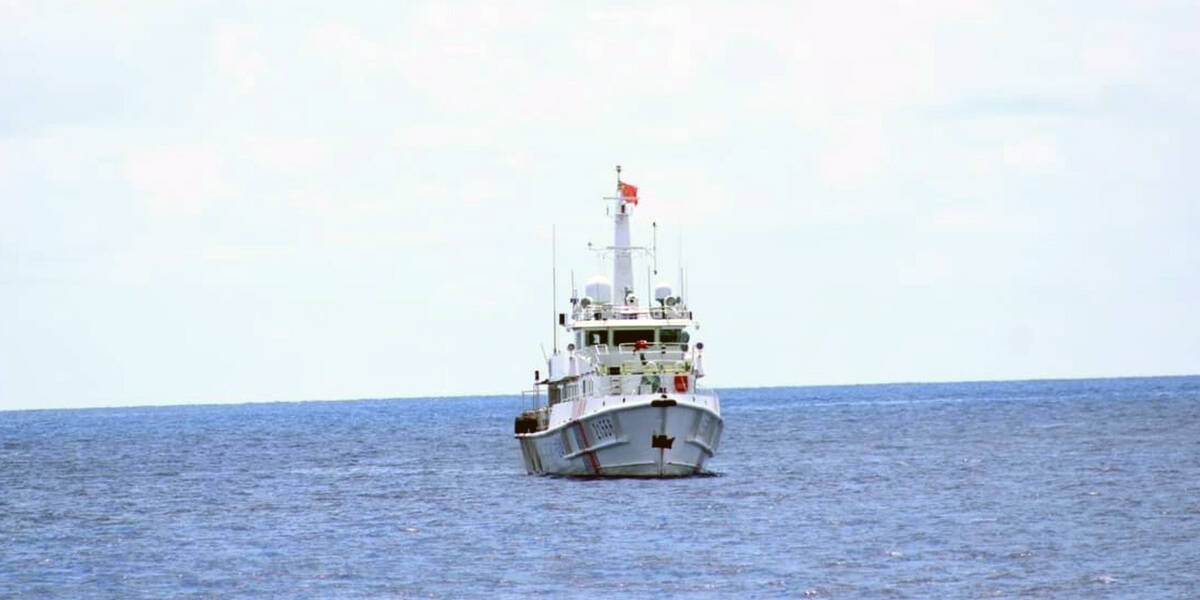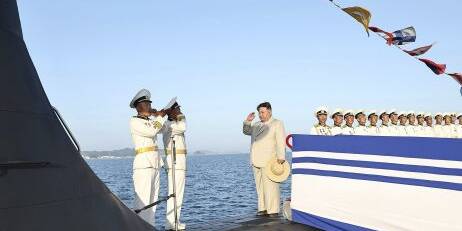Collin Koh Swee Lean, Nanyang Technological University, for East Asia Forum
The state visit to Beijing by Philippine President Ferdinand Marcos Jr in January 2023 did not yield the momentum for bilateral ties that his predecessor’s trip in 2017 did. Barely one month after the state visit, there was a flareup in the South China Sea (SCS) with the Chinese coastguard’s lasing of its Philippine counterpart off Second Thomas Shoal.
The situation went downhill, especially after Manila publicised Beijing’s coercive behaviour. There was the floating barrier incident in the Scarborough Shoal, though the focal point has centred on the Second Thomas Shoal where the Chinese and Filipinos faced off. Chinese forces harassed the Philippine rotation and resupply missions to the outpost and fired water cannons at the latter — the first documented instance since 2021.
2023 was eventful for SCS disputes beyond incidents between Beijing and Manila. Other Southeast Asian parties in the SCS continued business as usual. Malaysia and Vietnam continue to contend with regular Chinese forays into their exclusive economic zones. Hanoi silently strengthened its hold in the Spratlys through its land reclamation projects.
Extra-regional actors outside the SCS kept a constant presence. Japan is advancing defence and security links with Malaysia, the Philippines and Vietnam via its new Overseas Security Assistance framework. The United States has elevated ties with Indonesia and Vietnam to comprehensive strategic partnerships. Australia and the United States commenced joint air and sea patrols with the Philippines in the SCS.
Within a month, the US Navy conducted three freedom of navigation operations which explicitly targeted Second Thomas Shoal. That might not have rolled back Beijing’s actions, but it plausibly deterred further escalatory moves against the Philippines given the risk of triggering the Mutual Defense Treaty in operation between Manila and Washington.
But 2023 was not all gloomy. In Jakarta, ASEAN and China adopted guidelines that envisaged the completion of negotiations on the proposed Code of Conduct in the SCS by 2026. In a sign of warming ties, a flurry of high-level meetings between China and the United States were held. These culminated in the Filoli summit between the two countries’ leaders in November.
With the two major powers on the cusp of reviving high-level military communications, there is a mutual desire to stabilise fractious bilateral relations and prevent tensions from ballooning into an armed conflict, not least in the SCS.
The paradox of gunboat diplomacy coexisting with softer diplomacy looks set to persist in 2024. But there are uncertainties, not least elections in the United States and Taiwan. China’s economic slowdown is projected to endure in 2024, despite some positive signs.
The country’s exports and domestic consumption remain lacklustre. Local governments, property and shadow banking sectors continue to be fraught with debt problems. Some believe Beijing might externalise these domestic problems by seeking adventure in the SCS or around Taiwan’s coastline.
The contrarian view is that China is more likely to address its economic slowdown to restore the social compact that long underpinned the Communist Party’s political legitimacy. A major crisis that worsens the domestic situation is not desired, at least until China is in a more comfortable economic and technological position. For now, Beijing seems content with a holding pattern in the SCS — to continue muscling its maritime sovereignty using existing forms of grey zone actions that fall short of lethal force.
‘Horizontal’ escalation is therefore possible — China may intensify current grey-zone actions while maintaining escalation below the threshold of using force. The recent boat swarming in Whitsun Reef reflects the shrinking list of grey-zone options, short of vertical escalation into actions such as forcible boarding and inspection of rival claimants’ vessels which would be deemed incendiary. Despite domestic woes, Beijing might have calculated that it can comfortably play the long game in the SCS.
This state of affairs is enabled by other ASEAN parties in the SCS. Unlike Manila under Marcos Jr, other ASEAN parties have largely been silent or kept a low profile in their dealings with Beijing over the SCS issue. Brunei, Indonesia, Malaysia and Vietnam all fall into this category, prioritising economic engagements with China. Malaysia and Vietnam also took part in the China-hosted Exercise Aman Youyi 2023, reflecting their desire to maintain a balance between Beijing and other contending extra-regional actors. They believe that this approach has worked, and this looks likely to continue in 2024.
ASEAN and China envisage new gains from Code of Conduct negotiations. There are compelling reasons for both parties to do so. For ASEAN members, the Code asserts the bloc’s centrality and relevance. Beijing views the code as a demonstration of its willingness to ‘jaw-jaw, not war-war’. The Code also underlines its narrative that SCS littorals themselves can manage their own differences without external interference.
That said, problems that existed before COVID-19, such as differences over the geographical scope and role of non-signatories, continued into the post-pandemic restart of Code of Conduct negotiations. Complicating this is the degradation of mutual confidence and trust between China and some ASEAN parties because of SCS flare-ups since early 2020. Given this backdrop of strategic trust deficit, expectations on promulgating the code by 2026 must be tempered.
These uncertainties notwithstanding, SCS parties seem to be fully cognisant of the risks involved, especially in a premeditated conflict. They will continue to strengthen their positions in the SCS while remaining mindful of the dangers of inadvertent armed confrontation.
The original article can be found here at East Asia Forum.
Collin Koh is Senior Fellow at the S Rajaratnam School of International Studies, Nanyang Technological University, Singapore.
This article is part of an EAF special feature series on 2023 in review and the year ahead.
Feature image: via Wikimedia Commons
Related Analyses
September 15, 2024
West Philippine Sea: Several factors force BRP Teresa Magbanua to return – PCG
0 Comments1 Minute


